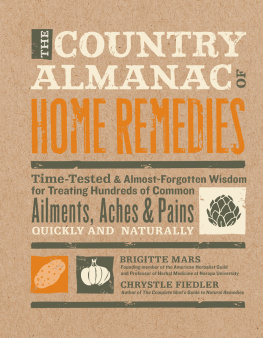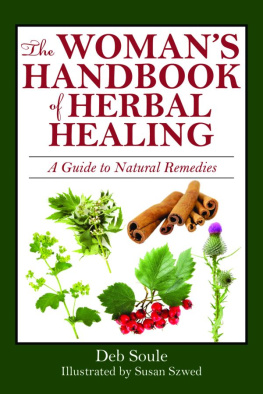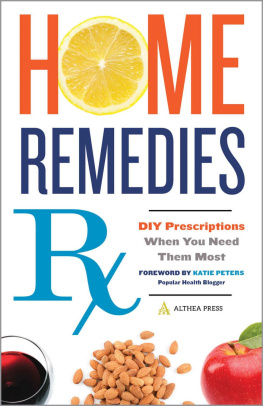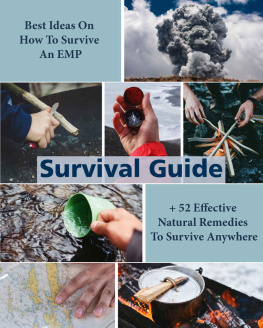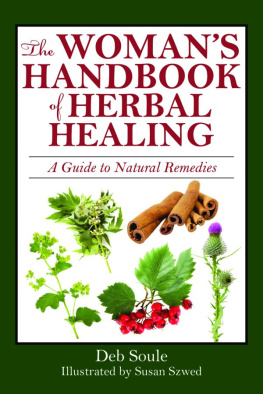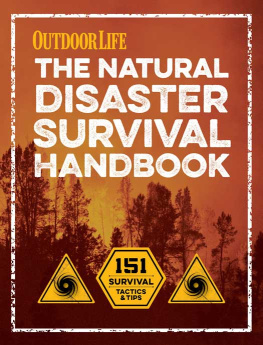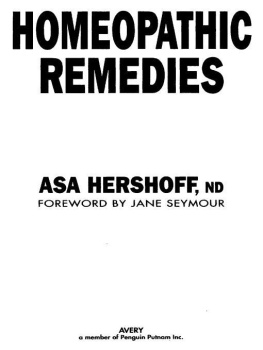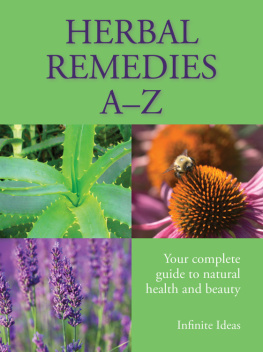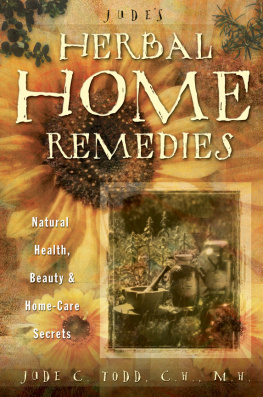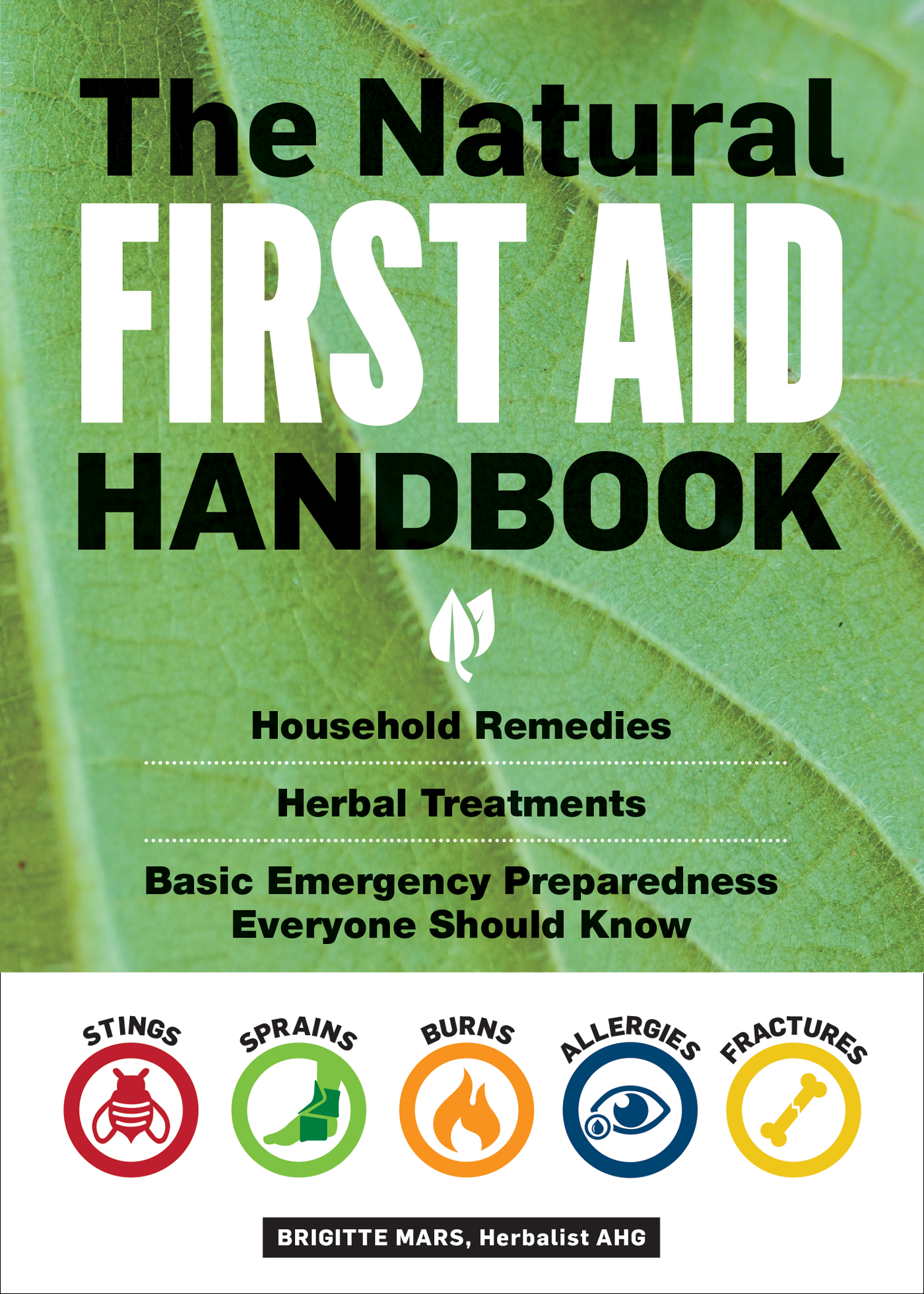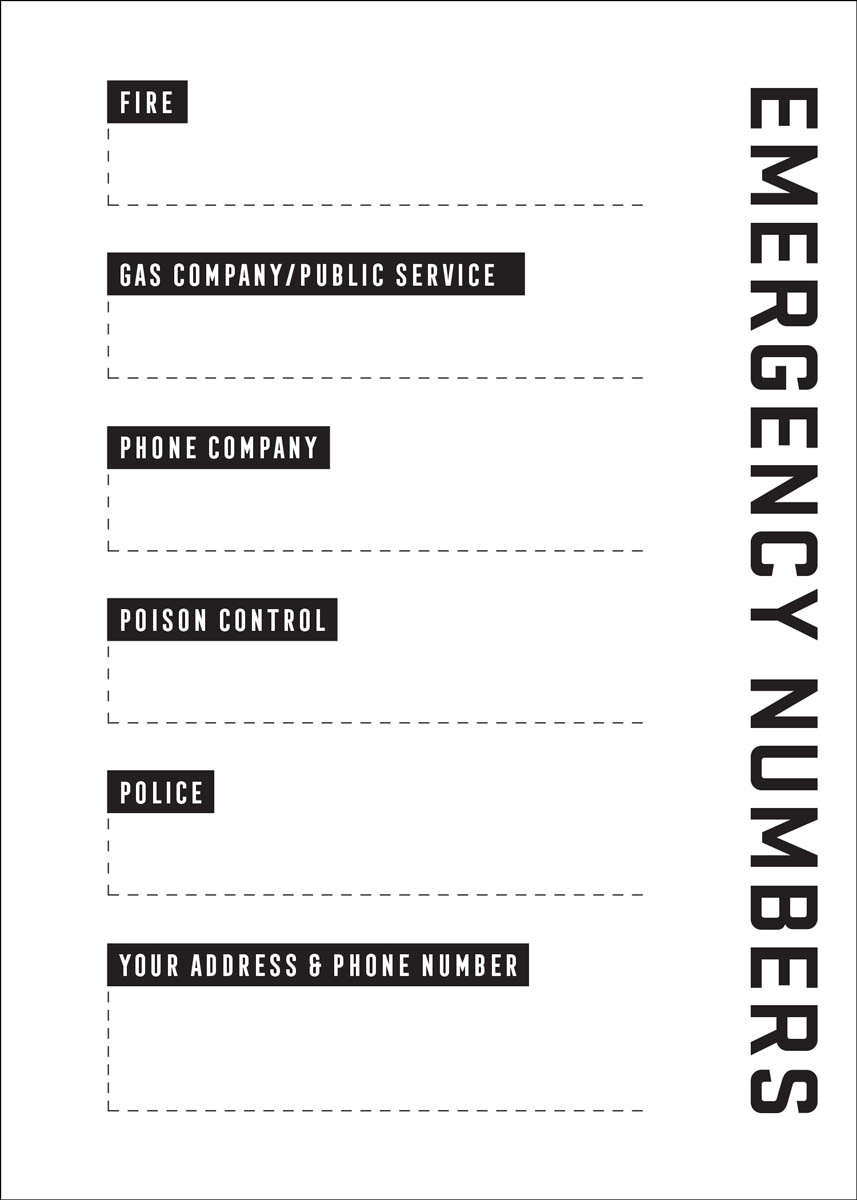Emergency Numbers
To download a printable version, go to
NaturalFirstAid.pdf
Dedicated to my parents, Rita and Morton Smookler
This publication is intended to provide educational information for the reader on the covered subject. It is not intended to take the place of personalized medical counseling, diagnosis, and treatment from a trained health professional.
Contents
Acknowledgments
A special thank-you to Dr. Charles Tawa of Boulder Family Practice for his extensive knowledge of emergency medical and health care; Lorene Wapotich, herbalist, for her expertise as a wilderness emergency technician; Matthew Becker, herbalist extraordinaire; Deborah Balmuth, Sarah Guare, Jeff Stiefel, and Slavica Walzl from Storey Publishing; and Paula Brisco for her keen editorial eye.
Introduction
Stay calm. Move quickly. Know what to do. These three rules are the foundation of natural first aid. They can mean the difference between life and death, injury and disability, a night in the hospital, and a life in a nursing home.
Unfortunately, even though most of us can generally manage to stay calm and move fast during a crisis, few of us really know what to do in an emergency or when an accident occurs. Even fewer know when and how to use the herbs and other home remedies that can heal.
Thats why this book was written. It contains all the techniques you need to render emergency first aid, specific instructions for more than 75 injuries and conditions, and clear indications for when medical help is needed. There is also a complete list of the ingredients youll need to stock in three different first-aid kits: an herbal kit to stay at home, a survival kit to keep in your car, and a traveling kit to tuck in your handbag or briefcase as you go about your life.
With this book, youll always be prepared. Memorize its lifesaving techniques. Learn its commonsense healing. Then supplement this knowledge by taking a first-aid and CPR course at your local chapter of the Red Cross or American Heart Association. And remember: this book is intended not as a replacement for competent medical care when needed but as a guide for appropriate action until help can be obtained.
In an emergency, call for help as soon as possible. Ask the injured person if he or she has any allergies, takes any medication, or suffers from any medical conditions so that you can relay this information to medical personnel should the victim lose consciousness. If the victim is unconscious, check for medical alert bracelets or necklaces. Never give food or water to an unconscious person, as she or he may choke. And never move a person with serious injuries, especially those affecting the neck or spine: your efforts, well meaning though they may be, could cause serious damage.
One final note: Preventing accidents and injuries is always easier than responding to them. Thats why I not only keep medicines out of childrens reach and inline skates off the stairs, but why I also often visualize surrounding myself and my loved ones with an aura of light as we go off into the busy world. Its a form of prayer and my way of acknowledging and asking for divine protection. I firmly believe it has helped save my family from danger and I urge you to use it, too.
Many blessings!
01
First-Aid Techniques Everyone Should Know
A Step-by-Step Illustrated Guide
While learning first aid might seem a daunting task, there is really only a handful of simple techniques that everyone should be familiar with. These techniques form the basis of almost all first-aid treatments and will prove invaluable if youre someday faced with an emergency situation. Although a book is a good place to start, its always best to get instruction from a qualified health-care provider before trying any of these techniques. In addition, always remember the most important rule of medicine: First, do no harm.
It is strongly recommended that you contact your local chapter of the American Heart Association (AHA) to find out more about training and certification in CPR in your area. The following CPR information is meant as a guide only.
Cardiopulmonary Resuscitation (CPR)
CPR is performed when someones breathing or pulse (or both) stops. When both stop, sudden death has occurred. Sudden death has many possible causes poisoning, drowning, choking, suffocation, electrocution, smoke inhalation but the most common is heart attack.
Everyone should know the signs of heart attack and the actions for survival. Everyone should also have a plan for emergency action.
Warning Signs
The warning signs of a heart attack are:
- Uncomfortable pressure, fullness, squeezing, or pain in the center of the chest that lasts more than a few minutes.
- Pain in the shoulders, neck, arms, back, jaw, or stomach.
- Shortness of breath with or without chest discomfort.
- Lightheadedness, fainting, sweating, nausea, or vomiting.
Not all these signs occur in every heart attack. Additional symptoms are listed on . If some start to occur, dont wait. Get help fast.
If you feel you might be having a heart attack, recognize the warning signs. Stop whatever youre doing and sit or lie down. Stay calm and relaxed. If the symptoms last more than a few minutes, call the local emergency number (usually it is 911 in the United States and Canada). If thats not possible, ask for help getting to the nearest hospital emergency room with emergency cardiac care. Do not attempt to drive yourself to the hospital.
!
Never practice CPR on a healthy person it can be harmful!
The Basics of CPR
CPR is a procedure thats as simple as assessing the situation, determining if the victim is breathing or has a pulse, giving chest compressions, opening the airway, and giving rescue breaths if necessary. (A helpful acronym to remember this is C-A-B: compressions, airway, breathing.) If you see a person collapse or come upon someone who is already lying unconscious, take immediate action.
Since incorrect chest compressions can cause internal injuries, CPR should be performed only by someone who has taken a professional course. CPR requires training, practice, and skill. This information is presented for the purpose of review for one who is trained. Keep in mind that anyone who performs CPR should pull on a pair of gloves if theyre available. Using a CPR mask or face shield is also strongly recommended, to help prevent the spread of any possible contagions.
Assessment and Activation
First verify that the scene is safe for you to perform CPR. Pinch the victims shoulder and shout, Are you OK? If the victim does not respond, shout for help. Call your emergency medical service (911 or local number).
If an automatic emergency defibrillator (AED) and emergency equipment are available, either get it yourself if you are alone or send someone else to retrieve it, then begin CPR. Most AEDs will have an automated prompt to instruct you on the correct procedure and on continuing to give chest compressions while the device charges.


